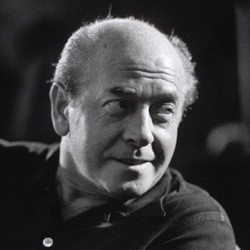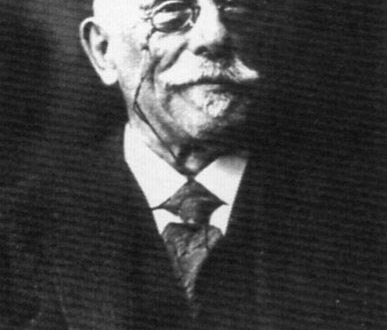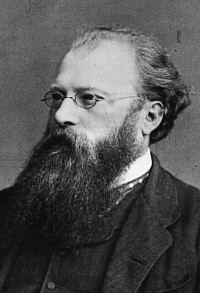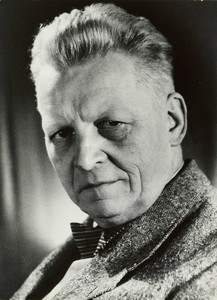
Eugene Ormandy |
Eugene Ormandy


American conductor of Hungarian origin. The name of this conductor is inextricably linked with the history of one of the best symphony orchestras in the world – the Philadelphia. For more than three decades, Ormandy has been the head of this collective, a case that is almost unprecedented in the practice of world art. In close creative communication with this orchestra, in essence, the talent of a conductor was formed and grew, the creative image of which is unthinkable outside of the Philadelphians even today. However, it is fair to recall that Ormandy, like most of the American conductors of his generation, came from Europe. He was born and raised in Budapest; Here, at the age of five, he entered the Royal Academy of Music and at the age of nine he began to give concerts as a violinist, at the same time studying with Yene Hubai. And yet, Ormandy was, perhaps, perhaps the first major conductor whose career began in the United States. About how this happened, the conductor himself says the following:
“I was a good violinist and gave many concerts after graduating from the Royal Academy in Budapest (composition, counterpoint, piano). In Vienna, an American impresario heard me and invited me to New York. This was in December 1921. I only found out later that he was not an impresario at all, but it was too late – I was in New York. All the major managers listened to me, everyone agreed that I was an excellent violinist, but I needed advertising and at least one concert at Carnegie Hall. All this cost money, which I did not have, so I entered the Theater Symphony Orchestra for the last console, at which I sat for five days. Five days later, happiness smiled at me: they made me an accompanist! Eight months passed, and one day the conductor, not knowing at all whether I could conduct at all, told me through the watchman that I would have to conduct at the next concert. And I conducted, moreover, without a score … We performed Tchaikovsky’s Fourth Symphony. I was immediately appointed fourth conductor. Thus began my conducting career.”
The next few years were for Ormandy years of improvement in a new field for him. He attended concerts of the New York Philharmonic Orchestra, at which Mengelberg, Toscanini, Furtwängler, Klemperer, Klaiber and other renowned masters were then standing. Gradually, the young musician rose to the position of the second conductor of the orchestra, and in 1926 he became the artistic director of the Radio Orchestra, then a rather modest team. In 1931, a happy coincidence helped him to attract attention: Arturo Toscanini could not come from Europe to concerts with the Philadelphia Orchestra, and after a futile search for a replacement, the management took the risk of inviting the young Ormandy. The resonance exceeded all expectations, and he was immediately offered the post of chief conductor in Minneapolis. Ormandy worked there for five years, becoming one of the most notable conductors of the new generation. And in 1936, when Stokowski left the Philadelphia Orchestra, no one was surprised that Ormandy became his successor. Rachmaninov and Kreisler recommended him for such a responsible post.
During his decades of work with the Philadelphia Orchestra, Ormandy has gained immense prestige throughout the world. This was facilitated by his numerous tours on different continents, and the boundless repertoire, and the perfection of the team led by him, and, finally, the contacts that connect the conductor with many outstanding musicians of our time. Ormandy maintained close friendly and creative ties with the great Rachmaninoff, who repeatedly performed with him and his orchestra. Ormandy was the first performer of Rachmaninov’s Third Symphony and his own Symphonic Dances, dedicated by the author to the Philadelphia Orchestra. Ormandy repeatedly performed with Soviet artists who toured the United States in recent years – E. Gilels, S. Richter, D. Oistrakh, M. Rostropovich, L. Kogan and others. In 1956, Ormandy, at the head of the Philadelphia Orchestra, toured Moscow, Leningrad and Kyiv. In the extensive and varied programs, the conductor’s skill was revealed to the fullest. Describing him, Ormandy’s Soviet colleague L. Ginzburg wrote: “A musician of great erudition, Ormandy impresses with his outstanding professional abilities, especially memory. Five large and complex programs, including also complex contemporary works, he conducted from memory, showing a free and detailed knowledge of the scores. During the thirty days of his stay in the Soviet Union, Ormandy held twelve concerts – an example of a rare professional restraint … Ormandy does not have a pronounced pop charm. The nature of his conducting is primarily businesslike; he almost does not care about the external, ostentatious side, all his attention is absorbed by contact with the orchestra and the music that he performs. What attracts attention is the greater length of his program than we are accustomed to. The conductor boldly combines works of different styles and eras: Beethoven and Shostakovich, Haydn and Prokofiev, Brahms and Debussy, R. Strauss and Beethoven…
L. Grigoriev, J. Platek, 1969





